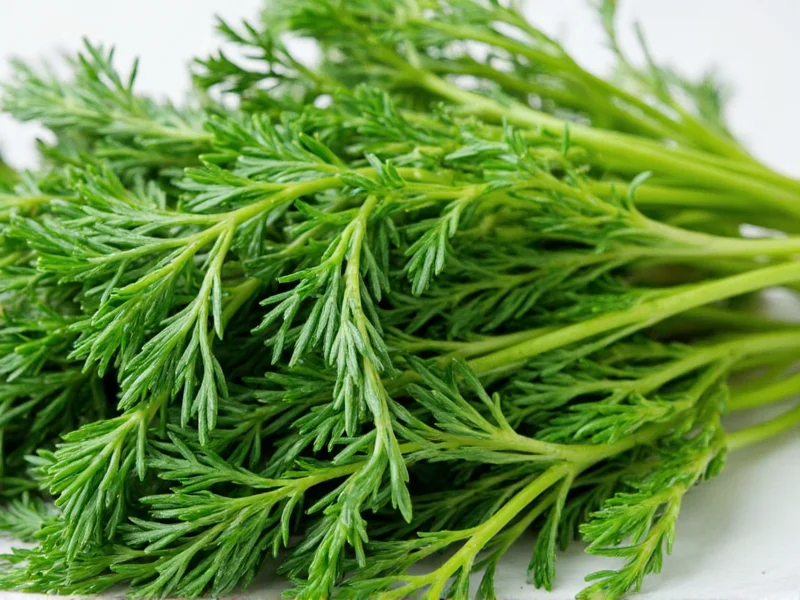Understanding the unique flavor profile of dill leaves helps home cooks and culinary enthusiasts incorporate this versatile herb effectively. Unlike many stronger herbs, dill offers a nuanced taste experience that enhances dishes without overwhelming other ingredients. This comprehensive guide explores the specific characteristics that define dill's flavor and how it compares to other common herbs.
The Complete Flavor Profile of Dill Leaves
Dill leaves, also known as dill weed, deliver a complex flavor that changes slightly depending on freshness and preparation method. The primary taste components include:
- Grassy freshness - Similar to young spring vegetables
- Anise/licorice notes - Much milder than fennel or tarragon
- Citrus undertones - Particularly lemon-like qualities
- Mild sweetness - Not sugary, but a pleasant balancing element
- Slight pepperiness - A delicate warmth rather than actual heat
Fresh dill provides the most vibrant flavor, while dried dill loses much of its delicate complexity and develops a more earthy, somewhat bitter profile. The stems contain more concentrated flavor than the feathery leaves, making them valuable for infusing broths and sauces.
How Dill Compares to Other Common Herbs
Understanding what dill leaves taste like becomes clearer when comparing it to familiar herbs. The table below shows key flavor comparisons:
| Herb | Flavor Profile | Similarity to Dill |
|---|---|---|
| Dill Leaves | Fresh, grassy, mild anise, citrus notes | Reference |
| Parsley | Grassy, slightly peppery, clean finish | Similar freshness but lacks anise notes |
| Cilantro | Bright, citrusy, sometimes soapy notes | Different chemical compounds create distinct experiences |
| Fennel Fronds | Pronounced anise/licorice flavor | Stronger anise notes than dill |
| Tarragon | Strong anise with subtle vanilla notes | More intense anise flavor than dill |
Factors That Influence Dill's Flavor
Several elements affect how dill leaves taste in your dishes:
Harvest Timing
Dill harvested in the morning after dew has dried but before intense sun exposure contains the highest concentration of essential oils, resulting in the most vibrant flavor. Dill picked later in the day may have a slightly more bitter profile.
Freshness Level
Fresh dill maintains its delicate flavor profile for about 3-5 days when properly stored. As dill ages, the flavor diminishes and can develop slightly bitter notes. The bright green color fading to yellow indicates flavor degradation.
Culinary Preparation
Heat dramatically affects dill's flavor. Adding fresh dill at the end of cooking preserves its bright, grassy notes, while prolonged cooking causes the delicate flavors to dissipate. When substituting dried dill for fresh, use one-third the amount as dried dill has more concentrated but less nuanced flavor.
Best Culinary Applications for Dill's Flavor
Dill's distinctive taste shines in specific applications where its delicate profile complements rather than competes with other ingredients:
- Seafood dishes - Particularly salmon, where dill's citrus notes enhance the fish's natural flavors
- Cucumber salads - The classic dill-cucumber pairing creates a refreshing combination
- Dips and sauces - Tzatziki, ranch dressing, and sour cream-based sauces benefit from dill's bright notes
- Potato salads - Dill adds complexity without overpowering the potatoes
- Vinegar infusions - Dill vinegar captures the herb's essence for dressings and marinades
Chefs often describe dill as having a flavor that what fresh dill tastes like in Scandinavian cuisine differs slightly from Mediterranean preparations due to soil composition and climate factors affecting the herb's essential oil concentration.
Substitutes When You Don't Have Dill
If you're wondering what tastes similar to dill leaves when they're unavailable, consider these alternatives:
- Fennel fronds - Provides stronger anise notes but similar texture
- Tarragon - More intense anise flavor, use sparingly
- Parsley with a touch of anise seed - Creates a reasonable approximation
- Caraway seeds (in small amounts) - Shares some flavor compounds but much stronger
When substituting, remember that no single herb perfectly replicates dill's unique flavor profile. The best approach often involves combining elements to approximate dill's complex taste characteristics.
Common Questions About Dill's Flavor
Does dill taste like licorice?
Dill contains subtle anise compounds that give it mild licorice-like notes, but significantly less pronounced than herbs like tarragon or fennel. The licorice flavor in dill is delicate and balanced by grassy and citrus elements, making it much milder than true licorice.
Why does dill taste different from dill seed?
Dill leaves and dill seeds come from the same plant but have dramatically different flavor profiles. Leaves offer fresh, grassy notes with citrus undertones, while seeds develop a stronger, warmer flavor with pronounced caraway-like notes and less of the fresh herbal quality. The chemical composition changes as the plant matures.
Can you taste the difference between fresh and dried dill?
Yes, the flavor difference between fresh and dried dill is significant. Fresh dill provides bright, grassy notes with subtle anise and citrus elements, while dried dill loses much of its delicate complexity, developing a more earthy, somewhat bitter profile with diminished aromatic qualities. Dried dill works best in long-cooked dishes where fresh would lose its flavor.
Is dill supposed to taste bitter?
Fresh dill should not taste bitter when properly harvested and used. Bitterness typically indicates the dill is past its prime, has been exposed to too much heat during cooking, or comes from a plant that has begun to flower (bolted). Young dill leaves harvested before flowering have the most delicate, pleasant flavor.
How would you describe dill flavor to someone who's never tasted it?
Dill offers a fresh, grassy flavor similar to young spring vegetables with subtle hints of anise (like mild licorice) and bright citrus notes, particularly lemon. It has a delicate sweetness that balances its herbal qualities without being overpowering, making it distinct from stronger herbs like rosemary or thyme. The overall impression is light, refreshing, and slightly aromatic.











 浙公网安备
33010002000092号
浙公网安备
33010002000092号 浙B2-20120091-4
浙B2-20120091-4